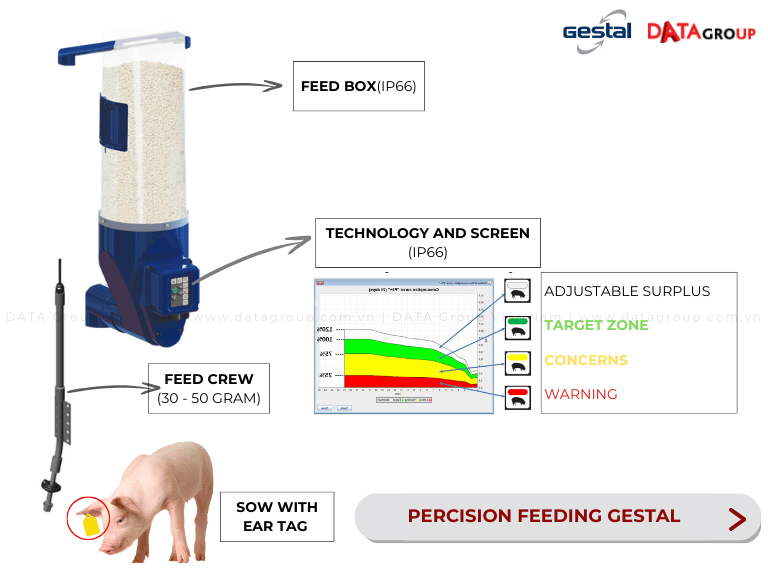Farmers still raise pigs using manual feeding methods

In fact, a sow usually gives birth to about 5-7 litters during its reproductive life before being culled. However, this number can vary depending on several factors such as the pig breed, husbandry conditions, farm management, and the sow’s health status.
- By traditional feeding methods, farmers cannot meticulously care for the feeding needs of sow individually.
- It is difficult to control the amount of feed when dispensing for pigs.
- The working conditions in pig farms make it challenging to attract and retain labor.
- Workers need holidays, leave, and time off for emergencies, but pigs need to be fed every day.
Some large-scale pig farms will implement more advanced processes and equipment, such as feed lines.

Feed lines help save manpower compared to manual feeding but still encounter issues such as:
- Difficulty in controlling pigs that refuse to eat or compete for food in the pens, leading to poor animal welfare.
- Feed wastage over time.
Example: In a farm with 200 sows, if each day 2 kg of feed is wasted due to sows not eating, eating less, or spillage, then in one month, the farm wastes approximately 60 kg of feed, which is about 2 bags.











